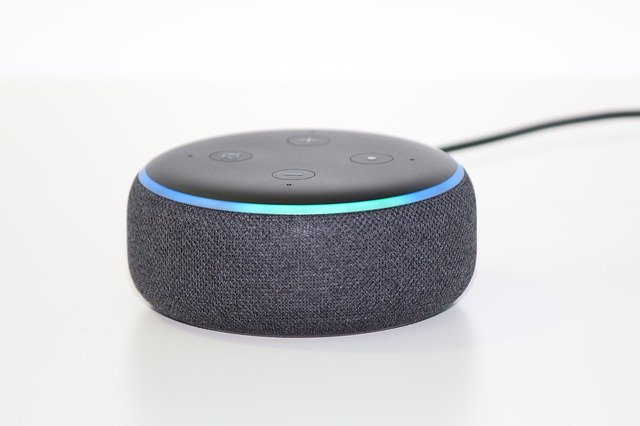Gone are those days when we had to keep an eye on the machines after giving them a task to perform. Now, machines have become smart, smarter than us when it comes to a lot of tasks. In this article, let’s look at some applications of deep learning, a technology that is responsible for smarter machines.
Remember when we had to provide all the instructions for washing clothes in a washing machine. We had to fill up water to an optimum amount and after it washes the clothes, we had to take the clothes and put them in a spinner where it used to spin dry. But now, washing machines have sensors. We just have to put our clothes into the cabin and switch on the washing machine. It will itself take the required amount of water, wash the clothes at the right temperature and also spin dry. All these are performed without human intervention in between.
Have you ever wondered how this is being done?
As we human beings use our intelligence to showcase our smartness, these machines use Artificial Intelligence(AI). With time, the intelligence of machines has also increased. Now, they just don’t work with the static data sets in their algorithm rather they learn from them as well.
Yess!!! The algorithms can learn from data. (Woah! Isn’t this cool!!!). Therefore, it is appropriately called machine learning. Here, we will be talking about a more advanced technique of Machine Learning, Deep Learning.
Deep Learning is a machine learning technique inspired by the neural network of human beings. Some training data is feed into the algorithm at first so that the machine remembers certain patterns from it.
The power of this neural network comes from how appropriately it can identify the pattern in the output from the training data. They generally perform a mapping function to all the neural nodes present in the network and give the most appropriate result. The result depends on the number of neural networks. More layers in the network ensure greater predictability.
Applications of Deep Learning
Let’s look at some of the applications of deep learning and the changes that are made in our life.
Image Recognition
In the past, if somebody told you that you can use your face to unlock your mobile phone, then you would have asked them: “Buddy, which science fiction are you reading/watching?”. Well, that’s not the case today.
Image recognition has become so common that you can even scan and recognize any image using your mobile phone. Just check the Google lens feature on your phone if you haven’t already.

Now, if you like a dress that your favorite celebrity is wearing or any product that you wish to buy, you don’t have to search the whole internet to find the same. You just have to use Google lens on that picture and Voila!!! You get the results in seconds.
The same technique is also used in logo detection in social media analytics. Many a time people don’t use hashtags for the products they use. Hence, Companies use this technique to monitor where their products are appearing, who all are seeing those, and what is their reaction towards them. This immensely helps the company in their market research. It helps them to know about the consumers and their behavior.
Some examples of applications used for logo detection are YouScan, LogoGrab, Brandwatch, Crimson Hexagon, etc.
Voice Recognition
Voice recognition takes the spoken word as input and gives us the required output. This has become very useful as it allows the user to just talk while doing another task simultaneously. Deep neural networks break this speech into smaller components so that it can easily interpret. These are then converted into a digital state and are analyzed.
Amazon Echo, Apple’s Siri, and Google Assistant use this technique to communicate with virtual assistants that help answer our questions. We don’t have to type everything into the search bar rather just speak into these devices and they will do the rest.
“Alexa, Play ‘Champagne problems’.”

*playing Champagne problems by Taylor Swift*
Customer Relationship Management (CRM) Systems
Customer data is an essential factor for growing the business and improving revenue. Therefore, companies use CRM software to automate and manage the customer life cycle. This is mainly used in knowing the customer needs and quickly responding to them if needed. This is essential for giving the customer the best customer experience and keeping them happy.
CRMs use predictive analytics to get a better return on investments(ROI). They have a predictive lead score to determine if the leads are qualified or unqualified.
So, what it generally does is that it monitors the buying patterns and likes of the customer and helps in predicting the customer decisions in the future. This is why you always get emails, messages, or advertisements of things that might interest you.
This will eventually help the company to accurately target their right customer and retain them for the future as well.
Projects Using Deep Learning
Deep learning isn’t rocket science and you can implement deep learning projects with the help of modern programming languages such as Python. There are various libraries available in Python which makes implementing deep learning very easy. If you want to see some example projects that can be created using deep learning, here are a few:
- Cats and Dogs Image Classification
- AI Virtual Assistant
- Face Detection From Images
- Image Classification Using CIFAR-10 Dataset
- Handwritten Digits Recognition Using MNIST Dataset
I’ve written in detail about these projects along with tutorials that will help you in implementing them. If you’re interested, click here to check out the article.
Industries That Uses Deep Learning
Here are some industries using deep learning techniques:-
Cybersecurity
There are a number of use cases in the cybersecurity space for deep learning. Cybersecurity is a space where accuracy is the most needed factor as detecting frauds and security threats are the main concerns. And accuracy is something that deep learning pulls off better compared to others. This generally comes with the deep neural network system.

Deep learning helps with an exceptional discovery rate for automation intrusion detection. It also works well in detecting malware and malicious code or URL. It has many other untapped potentials in this space. Hence, with proper vetting and anticipated gains deep learning is a worthy investment for the future.
Financial Services Industry
Financial service is yet another industry where there are a lot of opportunities to apply deep learning. Some companies use text analytics to discover insider trading or any government regulatory compliance.
Banks use predictive analytics to offer a more personalized user experience to their customers by recommending them new products that might be helpful to them, chatbots that help in routine transactions, etc.

Investment is the most attractive feature in the financial industry. Hedge funds use text predictive analytics to see the pattern in the historical data and market sentiment. This helps the investor with insights for future investment.
Oil & Gas Industry
Deep learning neural networks are used to get insights from data that are important for seismic modeling, prediction of machinery failures, automated well planning, and supply chain optimization.
With deep learning, the amount of production can be visualized and analyzed. Flow rates, pump pressures, and temperatures can be sensed. This capability helps better insights into various critical issues such as predicting which component or machine might fail and how they could affect the system as a whole.

Deep learning algorithms help oil and gas companies to know the best way possible to optimize their operations as the conditions are ever-changing. They also train models to predict and improve the efficiency, reliability, and safety of various types of equipment and operations.
Construction Industry
Deep learning can be also used for optimizing construction planning. The unique thing about the construction industry is that each project is different. Therefore, the algorithm may not have training data from past projects.

Hence, here simulations are considered as the training data set. This uses reinforcement learning models to get the fastest route to build projects. It runs step-by-step simulations, testing each sequence of doing certain work to find an optimal sequence
Social Media
Pinterest is a very good example of how deep learning technology is used in the social media industry. It uses visual search tools which help to zoom in on a specific object on a pinned image and then discover similar objects, colors, patterns, and more.

This is possible because the algorithms are taught how to recognize image features and patterns using a richly annotated data set of billions of Pins. The features or patterns are then used to compute the similarity score between images and identify the best match.
Final Thoughts
As you may see from the above examples, Deep learning has indeed created a deep impact on our lives and made it a whole lot easier. We are surrounded by objects and applications using deep learning. The tech industry is booming day by day. So, let us just wait and watch what the next big gift of science is for us.


